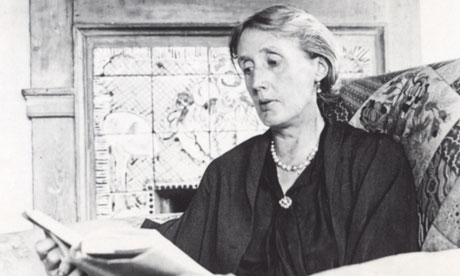
Keynesian interpretive dance is not a familiar concept. But John Maynard Keynes played a starring role in an unlikely history: he (and other members of the Bloomsbury group) regularly dabbled in amdram. "Bloomsbury parties" often involved parodies, plays and musical numbers performed for tipsy audiences of family and friends. Keynes, for example, took a lead role in a skit called Don't Be Frightened, or Pippington Park, dancing a duet with his Russian ballerina wife, Lydia Lopokova, at the conclusion of the play. This is one of the hidden histories of 46 Gordon Square in Bloomsbury, London, the house where Virginia Woolf lived from 1904-1907, and where Keynes himself lived until 1946.
These days, the house is home to the school of arts at Birkbeck, University of London, where I teach. Working at Birkbeck means teaching among ghosts. We like to imagine that the high-mindedness of the original residents somehow rubs off in our classrooms; even the original dumbwaiter for the building is still in situ. Last week, in order to pay homage to those Bloomsbury ghosts, the academic staff of the department of English performed a rehearsed reading of Woolf's play Freshwater in the JM Keynes library.
Yes, Woolf wrote a play. There is a good reason why you've probably never heard of it: it's pretty terrible. First written in 1923, and then revised for a performance at Vanessa Bell's art studio in 1935, Freshwater is a gentle satire of the bohemian world of her great-aunt, the early Victorian photographer Julia Margaret Cameron, famous for her impressionistic pictures based on Arthurian legends and Shakespearean scenes. The plot (such as it is) centres on the real-life story of the departure of 16-year-old actor Ellen Terry from her marriage to the much older painter George Frederick Watts. The dashing Lieutenant John Craig whisks her away to live in 46 Gordon Square and "lead a life of corruption […] in Bloomsbury", as the character of Watts exclaims disgustedly in the play.
Inevitably, performing in Keynes' library became a kind of archeological dig, in which the layers of the building's history emerged, revealing – perhaps a little unexpectedly – that sometimes the Bloomsbury group actually had fun. The earnestness that we often associate with the mix of painters (Bell, Duncan Grant and Angelica Garnett, who died this month), writers (Woolf), psychoanalysts (Adrian Stephen) and publishers (Leonard Woolf) – all of whom performed – is replaced by a rather more endearing picture of clumsy and drunken amateur theatricals. Not all the fun was in good spirits, however; the play somewhat nastily describes Lopokova as "an exquisite but not altogether ethereal nymph".
Nonetheless, the play's farcical humour, its in-jokes and its pleasure in the exaggerated bohemianism of Cameron's world reveal an unexpectedly silly side to these most serious of artists. Perhaps Keynesian interpretive dance is an aspect of the great man's work that, in these difficult economic times, we should continue to celebrate.
- Listen to an audio recording of the performance on the Birkbeck website.
- Aoife Monks teaches in the theatre department at Birkbeck, University of London.

